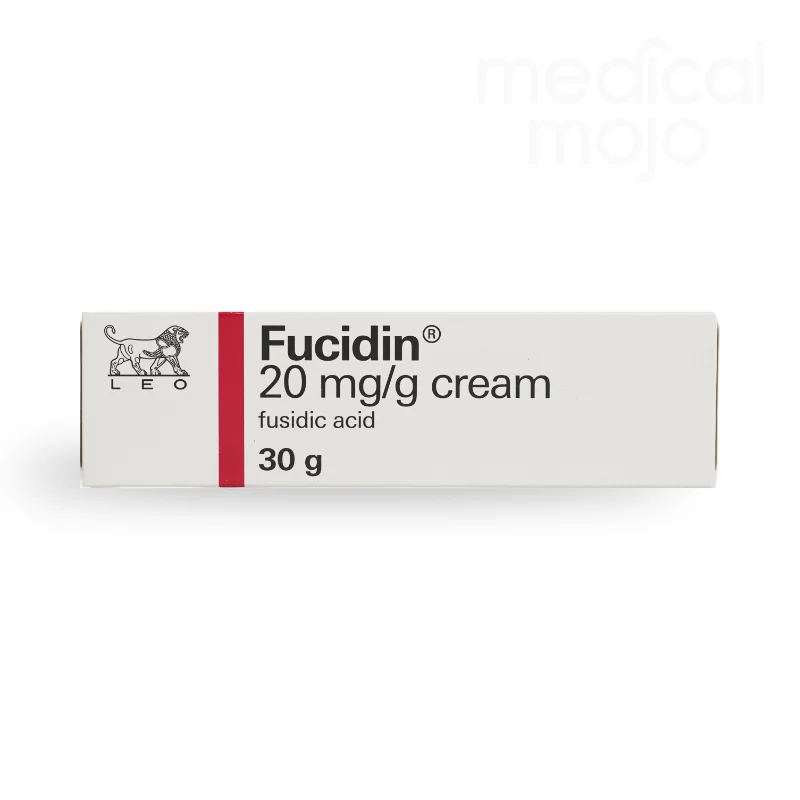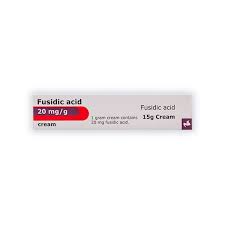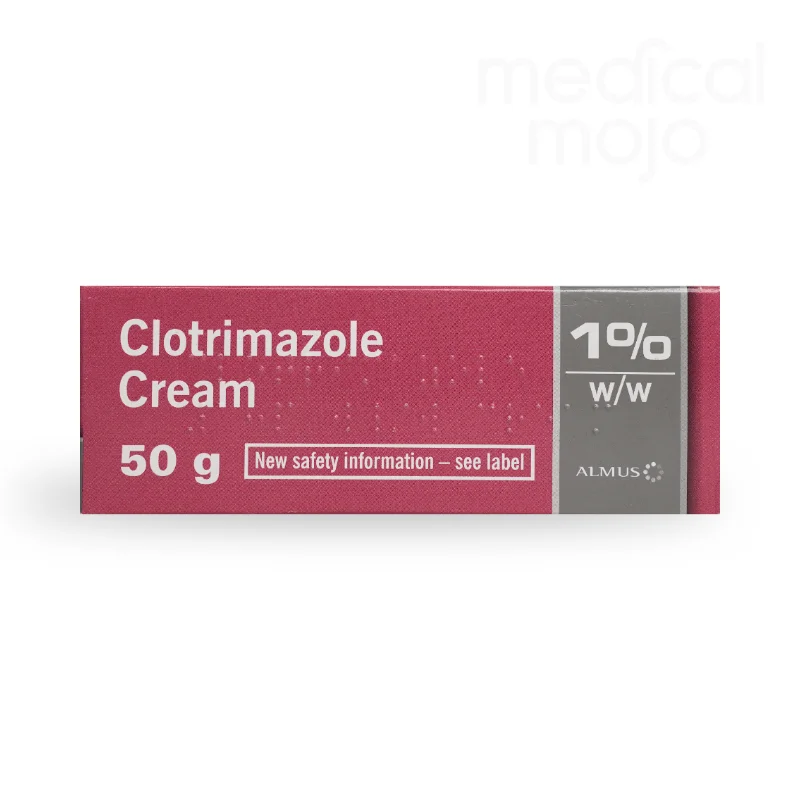Skin infections
Are bacteria feasting on your skin? Clear up skin infections fast with our effective treatments
Prescription-strength antibacterial and antifungal creams to clear infections fast.
FREE follow-up call from one of our prescribers.
Find the right skin infection treatment for you
View All ProductsWhat you should know about skin infection treatments
Skin infections can be caused by bacteria, viruses, fungi, or parasites. Common types include cellulitis (bacterial), athlete’s foot (fungal), impetigo (bacterial), herpes simplex (viral), and scabies (parasitic).
Symptoms of a skin infection can vary depending on the type but often include redness, swelling, warmth, pain, pus or discharge, and sometimes a fever. If you notice these symptoms, especially if they worsen over time, it’s important to seek medical advice.
Skin infections occur when harmful microorganisms (bacteria, viruses, fungi, or parasites) enter the skin through cuts, abrasions, or other openings. Poor hygiene, a weakened immune system, or exposure to infected individuals can increase your risk.
Treatment depends on the type of infection. Bacterial infections are usually treated with antibiotics, fungal infections with antifungals, viral infections may require antiviral medications, and parasitic infections are treated with antiparasitic drugs. In some cases, proper wound care and hygiene are also essential.
Yes, many skin infections can be prevented by maintaining good hygiene, avoiding sharing personal items like towels or razors, keeping cuts clean and covered, and promptly treating any wounds. Regularly washing your hands and avoiding contact with infected individuals also help reduce the risk.
You should see a doctor if you have a skin infection that is spreading, not improving with home care, causing severe pain, accompanied by a fever, or showing signs of a serious infection, such as red streaks, pus, or blackened skin.
Yes, if left untreated, some skin infections can spread to deeper tissues or other parts of the body. This can lead to more serious conditions like cellulitis, sepsis, or necrotizing fasciitis, which require urgent medical attention.
Some skin infections, such as impetigo, herpes simplex, and scabies, are contagious and can spread through direct contact or sharing personal items. It’s important to follow proper hygiene practices and avoid close contact with others if you have a contagious skin infection.
Additional information
Understanding skin infections: causes, symptoms, and treatment
Did you know that your skin is like armour? It’s your body’s first line of defence that keeps the bacteria that surround us from penetrating and making a home inside your body. It also serves to keep your insides, well, in. Due to the fact that we are made mostly of water, the skin also has to be pretty much watertight. To keep the skin healthy, supple and water resistant, the skin secretes an oil-like substance, sebum, which forms a coating over its surface. Too much sebum is also not a good thing and can cause acne but that is another topic altogether. If you want to learn more about the effects of excess sebum on your skin, just head over to the acne section.
Now, let’s return to skin infections. So, when your skin is nice, healthy and supple it forms a formidable barrier keeping those pesky bacteria, fungi and viruses on the outside. But you know these microorganisms are tenacious critters and are one of nature’s top-tier opportunists. All they need is the tinest breach in the skin to invade. So, every time you get a cut or abrasion, it provides the bacteria an opportunity to invade. Usually your immune system is up to the job, in fact your immune system is so powerful that given enough time it can cure itself from any infection.
The bacteria and fungi know this and once they get a foothold they begin to reproduce like mad to gain a foothold before the immune system calls in the big guns. These bug busters usually take about two weeks for the body to develop, so sometimes the kind folks at medicalmojo.co.uk can give your good old immune system a helping hand by offering a range of antibacterial creams which usually will stop the infection dead in its tracks.
What is a skin Infection and what causes it?
A skin infection occurs when harmful microorganisms, such as bacteria, viruses, fungi, or parasites, enter the skin through an injury or other vulnerabilities and begin to spread. Each type of pathogen causes different symptoms and requires specific treatments. These pathogens have their own versions of the good, the bad and the ugly, with the good bacteria living inside us in harmony, while the bad and the ugly are hovering outside, biding their time, waiting for the right opportunity to attack. While healthy skin is usually effective at blocking infections, any break in the skin can allow pathogens to enter and cause issues.
The primary cause of a skin infection is the introduction of a pathogen. However, the likelihood of infection increases when the skin is weakened or damaged, such as through cuts, abrasions, or conditions like eczema that disrupt the skin’s natural barrier.
Symptoms of a skin infection
Recognising the symptoms of a skin infection is crucial, especially if you have a cut or injury that could be exposed to infection. Common symptoms include:
- Worsening pain and inflammation: If the pain and swelling from a wound increase instead of decreasing over time, it may indicate an infection.
- Fever: Your immune system’s response to infection can trigger a fever, even if the infection itself seems minor.
- Reddened skin around the wound: Redness extending from the wound site could be a sign of cellulitis, a bacterial infection that affects deeper skin layers.
- Yellow crust over the wound: A yellow scab or crust, often indicating pus, could suggest an impetigo infection.
- Leaking fluid (pus) from the wound: If the wound is not healing and continues to leak fluid, it’s likely infected.
Types of skin infections
There are four primary types of skin infections:
- Fungal skin infections: These infections, such as athlete’s foot, thrive in damp areas of the body. They are usually uncomfortable but not dangerous.
- Bacterial skin infections: Common infections like impetigo and cellulitis often result in boils or infected cysts. These infections may require topical or oral antibiotics.
- Parasitic skin infections: Caused by parasites like mites or bedbugs, these infections can cause rashes and skin damage. In most cases, improved hygiene can resolve the issue, but severe cases may need medical treatment.
- Viral skin infections: Infections like chickenpox and measles are caused by viruses that enter through the skin and can cause widespread illness.
Treating a skin infection
Treatment for a skin infection depends on the type and severity of the infection:
- Bacterial infections: Topical antibiotic creams like Fucidin or Fucibet are commonly prescribed. Severe cases may require oral antibiotics.
- Viral infections: Antiviral treatments may be necessary, depending on the virus involved.
- Fungal infections: Antifungal creams like Canesten are effective in treating infections such as athlete’s foot.
- Parasitic infections: Addressing hygiene and cleanliness is often sufficient, but in more severe cases, antiparasitic medications may be needed.
Regardless of the type, keeping the affected area clean and protected is essential for recovery.
When to seek immediate medical help for skin infections
Red flags for skin infections indicate that the condition may be serious and requires prompt medical attention. Here are some key red flags to watch for:
- Rapidly spreading redness: If redness or swelling around a wound or area of infection spreads quickly, it could indicate a severe infection like cellulitis, which may need urgent treatment.
- Severe pain: If the pain associated with the infection is intense, worsening, or disproportionate to the size of the infection, it could signal a deeper or more serious infection, such as necrotizing fasciitis.
- Fever and chills: A fever, particularly if accompanied by chills, suggests that the infection may be spreading to other parts of the body (systemic infection) and could lead to sepsis.
- Pus or foul-smelling discharge: The presence of pus, especially if it’s foul-smelling or greenish, indicates that the body is fighting a bacterial infection that may require antibiotics.
- Skin necrosis: Blackened or dead skin (necrosis) around the infected area is a severe sign and could indicate a life-threatening condition like necrotizing fasciitis, requiring immediate medical intervention.
- Lymphangitis: Red streaks extending from the infected area toward the heart, often accompanied by swollen lymph nodes, can indicate the infection is spreading through the lymphatic system.
- Confusion or lethargy: If someone with a skin infection becomes unusually confused or lethargic, it could suggest that the infection is affecting the whole body (sepsis), which is a medical emergency.
- Swelling and tightness: Significant swelling and tightness around the infection site, especially if it’s accompanied by severe pain, could be a sign of a deeper infection or compartment syndrome, both of which require urgent care.
If you or someone else experiences any of these red flags with a skin infection, it’s crucial to seek medical attention immediately to prevent further complications.
Preventing skin infections
Preventing skin infections involves two main strategies: protecting your skin from damage and minimising exposure to pathogens. Here’s how:
- Protect your skin: Use gloves and protective clothing during activities that may cause cuts or abrasions. Be mindful of your surroundings to avoid unnecessary injuries.
- Maintain moisturised skin: Proper hydration prevents your skin from cracking or becoming overly soft, both of which can increase infection risk.
- Practice good hygiene: Regularly wash your skin, clothing, and bedding to remove potential sources of infection.
- Avoid exposure to contaminants: Use towels, plasters, and clean clothing to reduce contact with infectious agents, especially in public or communal areas.
By taking these precautions, you can significantly reduce your risk of developing skin infections.
Since we are talking about skin, we thought we would take this opportunity to share some amazing facts about your skin. It’s an organ, yes you read that right it is an organ, that often isn’t in the limelight in terms of its role in keeping us healthy. So, without further ado, let’s look at some amazing skin facts.
- Largest organ: The skin is the largest organ of the human body, covering about 20 square feet in adults. It serves as the primary barrier between the internal organs and the external environment.
- Three layers: The skin consists of three main layers:
- Epidermis: The outermost layer that provides a waterproof barrier and creates our skin tone.
- Dermis: Beneath the epidermis, containing tough connective tissue, hair follicles, and sweat glands.
- Hypodermis: The deeper subcutaneous tissue made of fat and connective tissue.
- Skin regeneration: The skin is constantly regenerating itself. The outer layer of the skin (epidermis) replaces itself every 28 to 30 days.
- Varied thickness: Skin thickness varies across the body. It’s thinnest on the eyelids (about 0.5 mm) and thickest on the soles of the feet (about 1.5 mm).
- Melanin production: Skin color is determined by the amount and type of melanin produced by cells called melanocytes in the epidermis. More melanin leads to darker skin, providing greater protection against UV radiation.
- Sweat glands: The human body has between 2 and 4 million sweat glands. These glands help regulate body temperature by releasing sweat to cool the body through evaporation.
- Microbiome: Your skin is home to billions of microorganisms, including bacteria, fungi, and viruses, collectively known as the skin microbiome. These organisms play a crucial role in protecting against harmful pathogens and maintaining skin health.
- Vitamin D synthesis: The skin plays a critical role in synthesizing vitamin D when exposed to sunlight. Vitamin D is essential for healthy bones and immune function.
- Protection and sensation: The skin protects the body from mechanical impacts, temperature variations, microorganisms, and harmful substances. It also contains nerve endings that allow us to feel touch, heat, cold, and pain.
- Aging signs: As we age, our skin naturally loses elasticity and becomes thinner, leading to wrinkles, fine lines, and age spots. Protecting the skin from excessive sun exposure can slow down these signs of aging.
Hopefully, these facts will help you love and appreciate your skin and encourage you to take better care of it through proper hygiene, hydration, and protection from the sun.
At Medical Mojo, we offer a range of treatments and expert advice to help you manage skin infections effectively. Whether you need an over-the-counter remedy, prescription strength treatments or just some professional guidance, our team is here to support your journey to healthier skin.
Also, I forgot to mention that when you are eligible to purchase any antibacterial cream, you will receive a FREE follow up call from one of our prescribers,
BSc Pharmacy, Independent Prescriber, PgDip Endocrinology, MSc Endocrinology, PgDip Infectious Diseases
Superintendant Pharmacist, Independent Prescriber
GP, Medical coach






